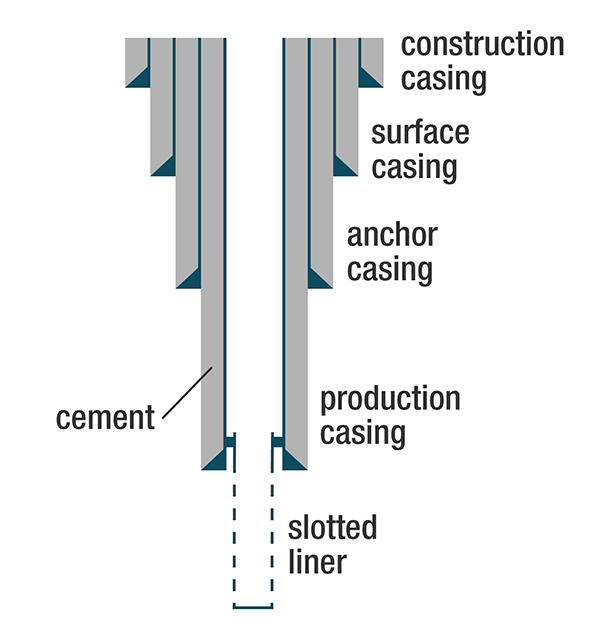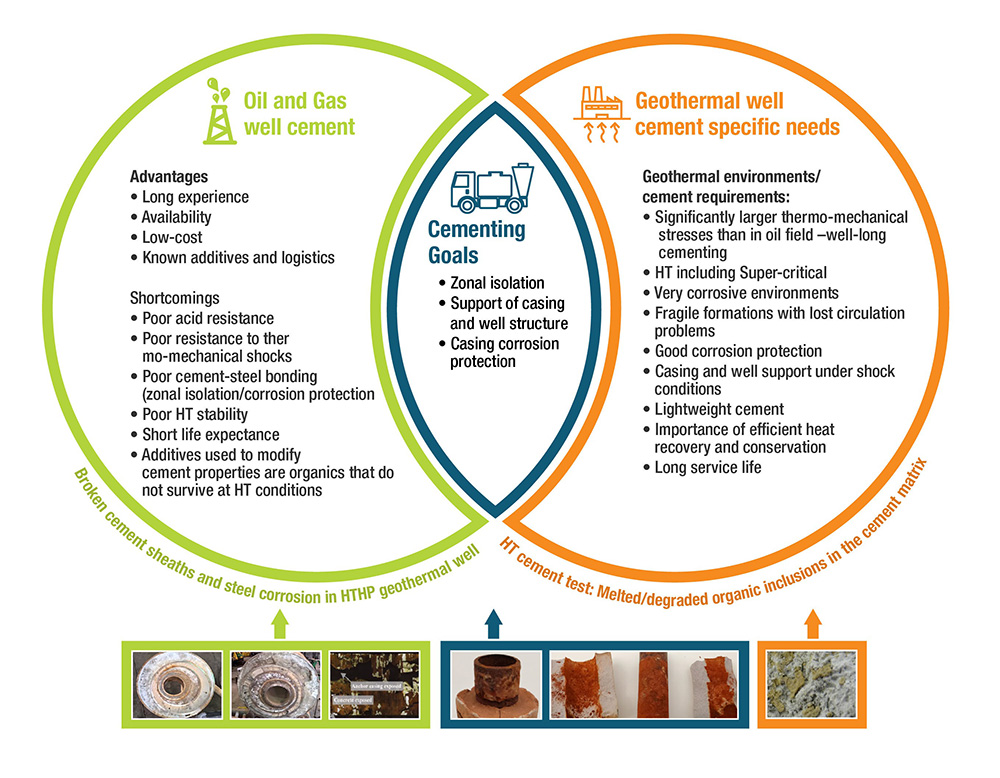
About Geothermal Energy
Geothermal energy is a renewable energy that makes use of the heat inside the earth. To recover this heat, underground wells are constructed in which heat-recovering fluid is injected and recovered after it has been heated in the sub-surface. Geothermal wells vary in depth depending on the application and the variation of temperature within that depth.


Well schematic
Deep geothermal wells are constructed with telescopic metallic tubes (casings); cement is pumped between the tubes and the surrounding rocks. The cement serves a critical function to provide zonal isolation or prevent the mixing of underground fluids from different zones, to protect the casings from corrosion and buckling under temperature and pressure stresses, and to support the well structure. If the cement fails, the integrity of the geothermal well is compromised.
The experiences of the underground oil and gas wells that have been constructed for more than a century are looked at as many of them are cemented. However, there are some important differences between oil and gas wells and geothermal wells; the major ones can be seen in the illstration below. In addition to the differences in the wells themselves there are different requirements to the well cements limiting applications of oil and gas cement formulations for geothermal wells. Finally, to be economical and sustainable geothermal wells are moving to very hot regions including magma locations where extreme (super critical) conditions require the use of new advanced materials.

Important differences between oil and gas wells and geothermal wells. Photos of broken cement sheaths and steel corrosion in HTHP geothermal well, courtesy of Ingólfur Örn Þorbjörnsson.



